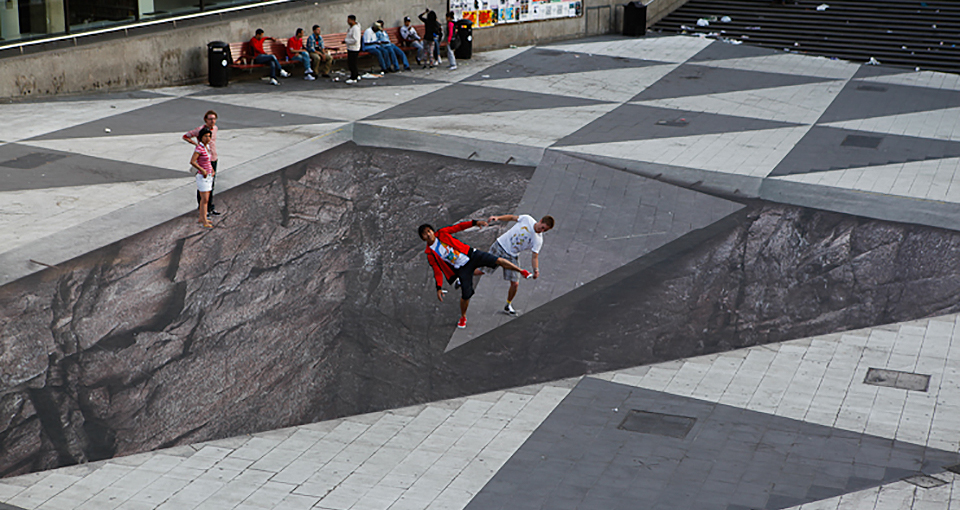
- #ART OF ILLUSION SOSFTWARE HOW TO#
- #ART OF ILLUSION SOSFTWARE INSTALL#
- #ART OF ILLUSION SOSFTWARE SOFTWARE#
- #ART OF ILLUSION SOSFTWARE WINDOWS#
Go ahead and hide the Papaya object before lathing the basin. Right-click the Curve 1 entry, and choose Clear. One more thing might annoy you - the extra lining along the papaya, which is the profile curve you used to create the papaya. Right click the entry click Rename Object, and name your object “Papaya”. Now, you might notice that your papaya object is called lathed object 1. You could move around the points to shape the papaya as you want it to appear, as shown in Figures 5, 6 and 7. If you feel that its shape is too “regular” and therefore appears artificial, you could even tweak your papaya by double-clicking it in the front viewport itself.
#ART OF ILLUSION SOSFTWARE HOW TO#
Have a little patience I’ll show you how to do that soon enough. That is because you haven’t textured it as yet. You have created your first object in Art of Illusion, as shown in Figure 4.ĭon’t be disheartened if it doesn’t look as impressive as you wanted. Accept the default settings and close the dialogue box. Select the first curve you created for the papaya, and go to the Tools menu and click the Lathe entry. Make sure the first curve is visible by clicking Show Selection after selecting the name of the curve visible in the property bar towards the right of the viewport. Make sure you create these curves in the front viewport.įigure 3: Profile curve for plate Lathing, tweaking, renaming and clearing Now go and create the second profile curve for the fruit container or bowl, as shown in Figure 3. Hide your first curve by selecting it and clicking Hide Selection under the Object menu. Your profile curve should correspond to the shape of half a papaya, as shown in Figure 2. Creating the profile curvesĬlick the Curve tool, and start adding points to create your first profile curve. It becomes a simple shortcut to the menu items, which are, as usual, arranged at the top. To the right of Figure 1, you find the property bar, which is helpful whenever you are either editing or texturing an object in the viewport. The ones in next column are Rotate, Universal Manipulator, Ellipsoid, Spline Mesh, Create Curve, Create Light and Rotate View. The left column toolbar icons in Figure 1, in order, are for Move, Scale, Cube, Cylinder, Polygon, Camera and Move View.

Although these icons are self-explanatory, I shall offer a quick introduction. On the left, you’ll find the icon toolbar. Thanks to the authors, it is not cluttered by too many icons, like other software. You get a simple-looking GUI, with a default camera and a light visible in the centre of the viewport as shown in Figure 1.ĭon’t be misled by the simplicity.
#ART OF ILLUSION SOSFTWARE INSTALL#
The Linux version is as simple to install as is Windows.
#ART OF ILLUSION SOSFTWARE WINDOWS#
The authors offer Linux and Windows versions.
#ART OF ILLUSION SOSFTWARE SOFTWARE#
Performance enhancement for better multi-thread raytracing on many-core processersĪ powerful, comprehensive and extensible modelling tool.Just download the software from. Art of Illusion comes with a few of these - including one which applies fur to a model - and you should be able to add more, although the default repository didn't seem to be working when we tried it.įiguring out precisely how all this works will take plenty of time and effort, but the website's " Art Gallery" of amazing sample images shows what can be done, and there's a manual, forum and various tutorials to help you get started.įix bug related to shaded mesh objects having wrong material properties calculatedįix twitchy smoothed Position/Rotation tracks Support for scripting via the Beanshell language allows the program to be extended in various ways, at least in theory. mov video, and there's support for skeletons using forward and inverse kinematic animation. Sequences of still images can be exported for use elsewhere, or exported as a. You're able to define materials, edit textures and surface properties, then create photorealistic images with motion blur, depth of field and more, Models can be constructed from cubes, spheres, cylinders, curves, spline and triangle meshes and more. Art of Illusion is a powerful Java-based 3D modelling and animation tool.


 0 kommentar(er)
0 kommentar(er)
